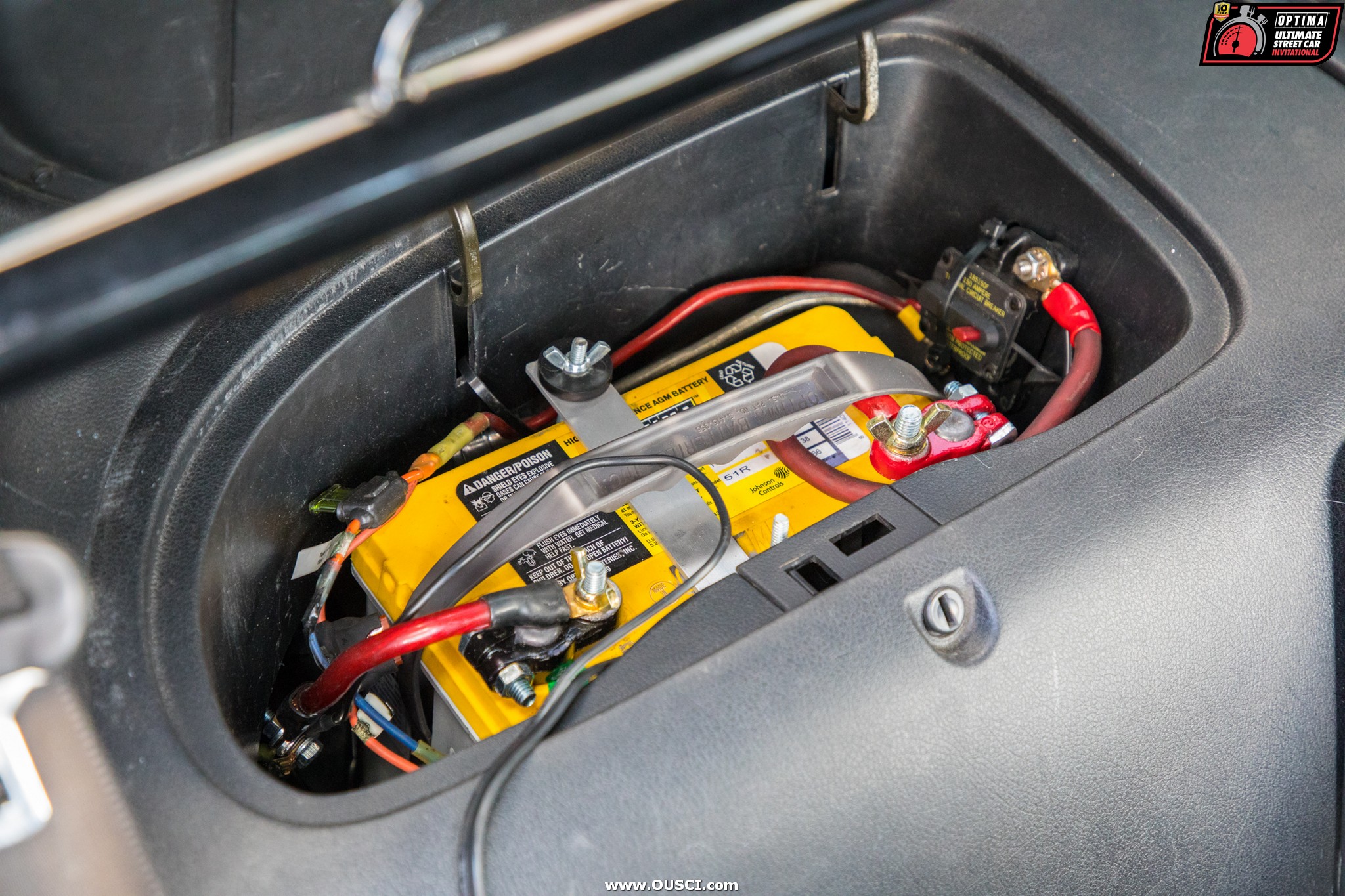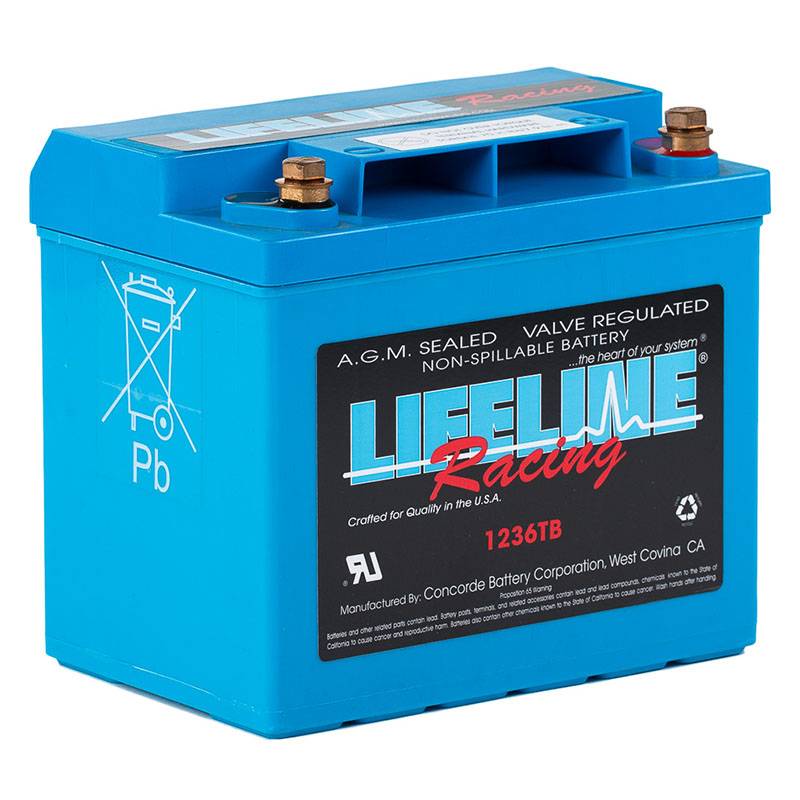Agm Camper Battery
When it comes to camping adventures, Agm Camper Battery a reliable battery is essential to power your AGM camper's electrical systems. The AGM camper battery is a popular choice among campers due to its maintenance-free design, deep-cycle capabilities, and resistance to vibration and shock. With the ability to withstand extreme temperatures and provide a steady flow of power, AGM batteries have become a staple in the camping community. In this article, we'll delve into the world of AGM camper batteries, exploring their benefits, features, and what to consider when selecting the right one for your camping needs.
Understanding AGM Camper Batteries for a Relaxed Camping Experience
When it comes to camping, having a reliable power source is essential to keep your appliances running smoothly. One popular option for campers is the AGM (Absorbed Glass Mat) camper battery, known for its durability and performance. In this article, we'll delve into the world of AGM camper batteries, exploring their benefits, features, and how to choose the right one for your camping needs.Agm Camper Battery
What is an AGM Camper Battery?
An AGM camper battery is a type of deep-cycle battery designed to provide a steady flow of power over an extended period. Unlike traditional flooded batteries, AGM batteries use a special glass mat to absorb the electrolyte, making them more reliable and maintenance-free. This design allows for a more efficient charge and discharge cycle, making AGM batteries ideal for camping applications.
Benefits of AGM Camper Batteries
AGM camper batteries offer several benefits that make them a popular choice among campers. These include:
Long Cycle Life: AGM batteries can withstand up to 500 charge and discharge cycles, making them a cost-effective option in the long run.
Low Maintenance: AGM batteries are sealed units that don't require regular maintenance, such as checking and replenishing electrolyte levels.
Improved Safety: AGM batteries are designed with safety in mind, reducing the risk of acid spills and electrical shock.
Better Performance: AGM batteries provide a consistent flow of power, even in extreme temperatures.
Key Features to Consider
When selecting an AGM camper battery, there are several key features to consider:
Capacity: Measured in Ah (Ampere-hours), capacity determines how long the battery will last. A higher capacity means more power for your appliances.
Voltage: AGM batteries typically operate at 12V, but some models may offer 24V or 48V options.
Dimensions: Consider the physical size of the battery and how it will fit in your camper.
Weight: Lighter batteries are easier to transport, but may sacrifice capacity.
How to Choose the Right AGM Camper Battery
Choosing the right AGM camper battery depends on several factors, including your power requirements, budget, and camper size. Here are some tips to help you make an informed decision:
Calculate Your Power Needs: Determine the total power required by your appliances and devices to ensure the battery can meet your needs.
Consider Your Budget: AGM batteries vary in price, so set a budget and look for options that meet your needs within that range.
Check the Warranty: Look for manufacturers that offer a comprehensive warranty and reliable customer support.
Comparison of Popular AGM Camper Batteries-Agm Camper Battery
Here's a comparison of popular AGM camper batteries:
| Model | Capacity (Ah) | Voltage (V) | Dimensions (in) | Weight (lbs) |
|---|---|---|---|---|
| Battery A | 200 | 12 | 13 x 7 x 9 | 50 |
| Battery B | 250 | 12 | 15 x 8 x 10 | 60 |
| Battery C | 300 | 12 | 17 x 9 x 11 | 70 |
Note: The table above is a fictional representation of AGM camper batteries and should not be taken as a real comparison.
Are AGM batteries good for campers?

AGM (Absorbed Glass Mat) batteries are a popular choice among campers due to their reliable performance, low maintenance, and versatility. Here are some reasons why AGM batteries are well-suited for camping:
Deep Cycle Capability
AGM batteries are designed to provide a steady flow of energy over a long period, making them ideal for camping. They can be deeply discharged and recharged multiple times, which is essential for camping applications where power is needed for extended periods. Deep cycle capability allows AGM batteries to provide consistent power, even when the battery is partially discharged.
Low Maintenance
AGM batteries are maintenance-free, which is a significant advantage for campers. They don't require regular watering, equalizing, or cleaning, reducing the risk of acid spills and minimizing the time spent on battery maintenance. This feature makes AGM batteries perfect for camping, where maintenance can be a challenge.
Vibration Resistance-Agm Camper Battery
Campers often encounter rough terrain, which can cause battery damage. AGM batteries are designed to withstand vibrations and shocks, ensuring that they continue to perform even in rough conditions. This feature is essential for camping, where batteries are subject to constant movement and vibrations.
Spill-Proof Design-Agm Camper Battery
AGM batteries are spill-proof, which is a critical safety feature for camping. The absorbed glass mat technology prevents acid spills, reducing the risk of accidents and environmental damage. This design feature makes AGM batteries safe to use in camping applications.
Wide Operating Temperature Range
AGM batteries can operate in a wide range of temperatures, from -20°C to 50°C (-4°F to 122°F). This feature is essential for camping, where temperatures can vary significantly. Temperature tolerance ensures that AGM batteries provide reliable power, even in extreme weather conditions.
- AGM batteries are suitable for camping applications due to their deep cycle capability.
- They are maintenance-free, reducing the risk of acid spills and minimizing maintenance time.
- AGM batteries can withstand vibrations and shocks, making them ideal for rough terrain.
- The spill-proof design ensures safe operation and reduces the risk of environmental damage.
- AGM batteries can operate in a wide range of temperatures, providing reliable power in extreme weather conditions.
Can I replace a lead acid battery with an AGM in a RV?

Yes, you can replace a lead acid battery with an AGM (Absorbed Glass Mat) battery in a RV. However, it's essential to consider the compatibility and requirements of your RV's electrical system before making the switch.
Advantages of AGM Batteries
AGM batteries offer several benefits over traditional lead acid batteries. Here are some of the key advantages:
- Improved Cycle Life: AGM batteries can last up to 5-7 years, compared to 3-5 years for lead acid batteries.
- Low Maintenance: AGM batteries are sealed and do not require regular watering or maintenance.
- Faster Charging: AGM batteries can charge up to 5 times faster than lead acid batteries.
Compatibility Considerations
Before replacing your lead acid battery with an AGM battery, ensure that your RV's electrical system is compatible. Check the following:
- Voltage and Capacity: Verify that the AGM battery has the same voltage and capacity as the original lead acid battery.
- Charging System: Ensure that your RV's charging system is designed to charge AGM batteries, as they have different charging requirements.
- Wiring and Connections: Check that the wiring and connections are compatible with the AGM battery's terminals and configuration.
Installation and Mounting
When installing an AGM battery in your RV, follow these guidelines:
- Secure Mounting: Ensure the AGM battery is securely mounted to prevent vibration and movement.
- Proper Ventilation: Provide adequate ventilation to prevent the buildup of hydrogen gas.
- Correct Orientation: Install the AGM battery in the correct orientation to prevent acid spillage.
Performance and Efficiency
AGM batteries are designed to provide improved performance and efficiency. Here are some benefits:
- Better Cold-Cranking Performance: AGM batteries provide better cold-cranking performance, making them ideal for RVs that are often used in cold climates.
- Improved Deep-Cycle Performance: AGM batteries are designed to handle deep-cycle applications, making them suitable for RVs with heavy electrical loads.
- Reduced Self-Discharge: AGM batteries have a lower self-discharge rate, allowing them to hold their charge longer when not in use.
Troubleshooting and Maintenance
When troubleshooting or maintaining your AGM battery, keep the following in mind:
- Monitor Charging Cycles: Keep track of charging cycles to ensure the battery is not overcharged or undercharged.
- Check Electrolyte Levels: Although AGM batteries are sealed, it's still essential to check the electrolyte levels periodically.
- Perform Regular Cleaning: Clean the terminals and connections regularly to prevent corrosion and maintain good electrical connections.
What is the main disadvantage of an AGM battery?

The main disadvantage of an AGM (Absorbent Glass Mat) battery is its higher cost compared to traditional flooded batteries. This is due to the advanced technology and materials used in AGM batteries, which increase their production cost.
Limited Cycle Life
AGM batteries have a limited cycle life, which means they can only be discharged and recharged a certain number of times before their capacity starts to degrade. This limited cycle life can be a disadvantage for applications that require a large number of charge/discharge cycles. For example:
- AGM batteries may not be suitable for renewable energy systems that require frequent charging and discharging.
- The limited cycle life can lead to a shorter overall lifespan of the battery.
- This can result in higher maintenance costs and more frequent replacements.
Sensitive to High Temperatures
AGM batteries are sensitive to high temperatures, which can affect their performance and lifespan. High temperatures can cause the battery to degrade faster, leading to a reduction in its overall capacity. For example:
- Operating an AGM battery in high-temperature environments can reduce its lifespan.
- The battery's capacity may be reduced if it is exposed to high temperatures for extended periods.
- This can lead to a decrease in the battery's overall performance and reliability.
Requires Specialized Charging
AGM batteries require specialized charging systems to ensure they are charged correctly. This can be a disadvantage for users who do not have access to the required charging equipment. For example:
- AGM batteries require a charging system that can provide a specific charging profile.
- The charging system must be able to detect the battery's state of charge and adjust the charging voltage accordingly.
- Failure to use the correct charging system can result in reduced battery performance and lifespan.
Heavier than Other Battery Types
AGM batteries are generally heavier than other types of batteries, such as lithium-ion batteries. This can be a disadvantage for applications where weight is a critical factor. For example:
- AGM batteries may not be suitable for applications where weight is a critical factor, such as in aircraft or electric vehicles.
- The added weight can increase the overall weight of the system, affecting its performance and efficiency.
- This can also make the battery more difficult to handle and transport.
Not Suitable for Deep Discharge Applications
AGM batteries are not suitable for deep discharge applications, as they can be damaged if they are deeply discharged. This can be a disadvantage for applications that require a high depth of discharge. For example:
- AGM batteries should not be deeply discharged, as this can cause permanent damage to the battery.
- The battery's capacity may be reduced if it is deeply discharged on a regular basis.
- This can lead to a decrease in the battery's overall lifespan and reliability.
How long do AGM batteries last in an RV?

AGM batteries in an RV can last anywhere from 4 to 7 years, depending on various factors. The lifespan of an AGM battery is influenced by the depth of discharge (DOD), charging cycles, maintenance, and environmental conditions.
Factors Affecting AGM Battery Lifespan
The lifespan of an AGM battery in an RV is affected by several factors, including:
- Depth of Discharge (DOD): The deeper the battery is discharged, the shorter its lifespan. AGM batteries should not be discharged below 50% to ensure a longer lifespan.
- Charging Cycles: The number of charge and discharge cycles also impacts the battery's lifespan. AGM batteries can handle around 200-300 charging cycles.
- Maintenance: Proper maintenance, such as checking the electrolyte level and ensuring the battery is securely fastened, is essential to extend the battery's lifespan.
- Environmental Conditions: Extreme temperatures, humidity, and vibrations can affect the battery's performance and lifespan.
Signs of AGM Battery Degradation
As AGM batteries age, they may exhibit certain signs of degradation, including:
- Reduced Capacity: The battery may not hold its charge as well as it used to, resulting in shorter runtime.
- Slower Charging Times: The battery may take longer to charge, indicating a decrease in its ability to accept a charge.
- Increased Self-Discharge: The battery may lose its charge more quickly when not in use, resulting in a shorter shelf life.
Tips for Extending AGM Battery Life
To get the most out of your AGM batteries in an RV, follow these tips:
- Avoid Deep Discharges: Try to keep the battery above 50% charge to minimize wear and tear.
- Monitor Charging Cycles: Keep track of the number of charging cycles to ensure the battery is not being overused.
- Perform Regular Maintenance: Check the electrolyte level, clean the terminals, and ensure the battery is securely fastened.
AGM Battery Replacement Options
When it's time to replace your AGM batteries, consider the following options:
- New AGM Batteries: Replace the old batteries with new ones of the same type and capacity.
- Lithium-Ion Batteries: Upgrade to lithium-ion batteries, which offer longer lifetimes and faster charging times.
- Battery Upgrades: Consider upgrading to a higher-capacity battery or adding additional batteries to increase overall capacity.
Conclusion-Free Zone
(No conclusion here!)
Frequently Asked Questions
What is an AGM Camper Battery and How Does it Differ from a Regular Battery?
An AGM (Absorbent Glass Mat) camper battery is a type of deep cycle battery specifically designed for camping and RV applications. The main difference between an AGM battery and a regular battery lies in its internal construction and functionality. AGM batteries use a specialized glass mat to absorb the electrolyte, which allows for a more efficient and reliable performance. This design also makes them more resistant to vibrations, shocks, and extreme temperatures, making them ideal for off-grid camping and RVing. In contrast, regular batteries use a liquid electrolyte that can be prone to spillage and damage, making them less suitable for camping and RV applications.
What are the Benefits of Using an AGM Camper Battery?
Using an AGM camper battery offers several benefits for campers and RV owners. One of the main advantages is their deep cycle capability, which allows them to provide a steady flow of power over an extended period. This makes them ideal for powering appliances, lights, and other devices when camping or boondocking. AGM batteries are also more durable and long-lasting, with a longer lifespan compared to regular batteries. Additionally, they are maintenance-free, requiring no watering or maintenance, which makes them a convenient option for busy campers. Furthermore, AGM batteries are more environmentally friendly, as they contain less toxic materials and are recyclable.
How Do I Choose the Right AGM Camper Battery for My Needs?
Choosing the right AGM camper battery depends on several factors, including your power requirements, budget, and camping style. Determine your power needs by calculating the total wattage of the appliances and devices you plan to power. Consider the battery's capacity, measured in ampere-hours (Ah), and its cold cranking amps (CCA) rating, which indicates the battery's ability to start your engine in cold temperatures. Consider the battery's size and weight, as well as its warranty and maintenance requirements. It's also essential to check the battery's compatibility with your camper or RV's electrical system. By considering these factors, you can choose an AGM camper battery that meets your specific needs and provides reliable performance.
How Do I Properly Maintain and Charge My AGM Camper Battery?
Proper maintenance and charging are essential to extend the life of your AGM camper battery. Always follow the manufacturer's charging recommendations, as overcharging can damage the battery. Use a high-quality charger specifically designed for AGM batteries, and avoid deep discharging, as this can reduce the battery's lifespan. Monitor the battery's state of charge regularly, and keep the battery terminals clean and free of corrosion. It's also essential to store the battery in a cool, dry place when not in use, and avoid extreme temperatures, which can affect the battery's performance. By following these tips, you can ensure your AGM camper battery provides reliable power for your camping and RV adventures.


